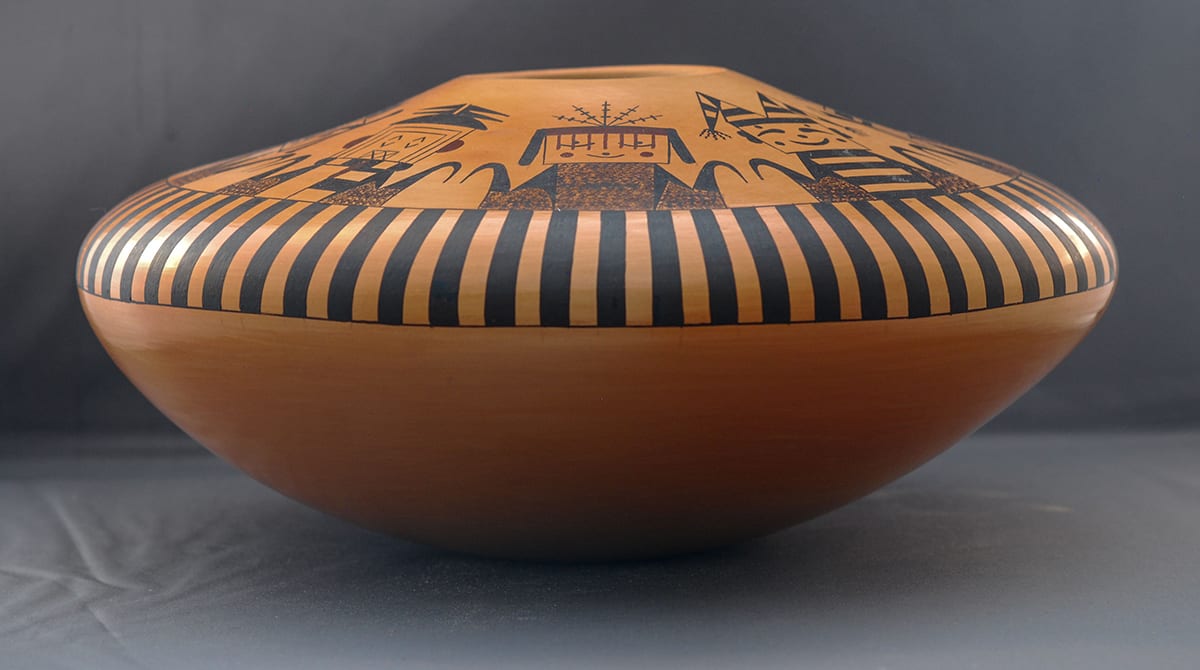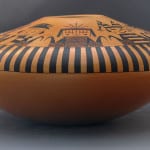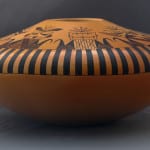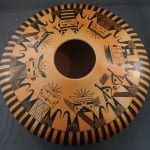This is a beautifully formed pot of the classic Sikyatki and Nampeyo “flying saucer” shape. Much of the beauty of the piece emerges from a simplicity of form: rising off a base the jar flows outward and upward to a midpoint of maximum width, then curves in to form a wide shoulder that flows into a short, truncated neck. The base and mouth are of similar size, as is the height of the top shoulder and bottom of the vase. The bottom seems to curve up from the base a bit more abruptly than the top shoulder curves towards the rim. As a result, the pot seems to spring off its base and thrust the painted upper surface toward the viewer’s eye. The walls of the vessel are thin and even; for its size the piece is unusually light. The surface is subtly blushed from its outdoor firing. Left unpainted this would still be an elegant and attractive pot.
(See 2005-16 for Nampeyo’s rendition of this form.)
Rising 1.5” from the maximum width of the jar onto the upper shoulder is a phalanx of 64 black stripes framed by thin lines. Above them are a chorus line of eight Katchina and koyemsi shown from the waist up and encircling the pot.
Garrett ground his paints well: the color is solid and dark. The painting is polychromatic, but the red color used is so dark maroon that the contrast with the black areas is subtle. All eight beings have the same black stippled shoulders and solid, black hook-shaped hands. Three of the eight beings share the same body design: an unpainted torso cut across by a downward red sash. The other five body designs are unique, as are all eight heads.
The encircling line of black rectangles forces the viewer’s eye to regard the design above it. There is visual tension between these rectangles and the 16 sharply curvilinear hands. The line of spirit beings is united by some elements of design but each is also unique. Linear contrast with curvilinear; repetition ties the design together; unique elements provide interest. The design would have worked well as a monochromatic pattern, but the addition of stippled areas and dark maroon color give the design greater variation and interest. The overall effect is both understated and masterful.
Pot 2013-23 won the “First Place” ribbon for pottery in the 2013 Tuhisma Arts show at Hopi. It also won a “Judges Choice” ribbon for being one of the three “best” pieces in the show. (An extraordinary silver cuff won “Best of Show.”)
For photographs of Garrett heating and then firing his pots (including one with a design much like 2013-23), see Trimble (2007:24-26).






